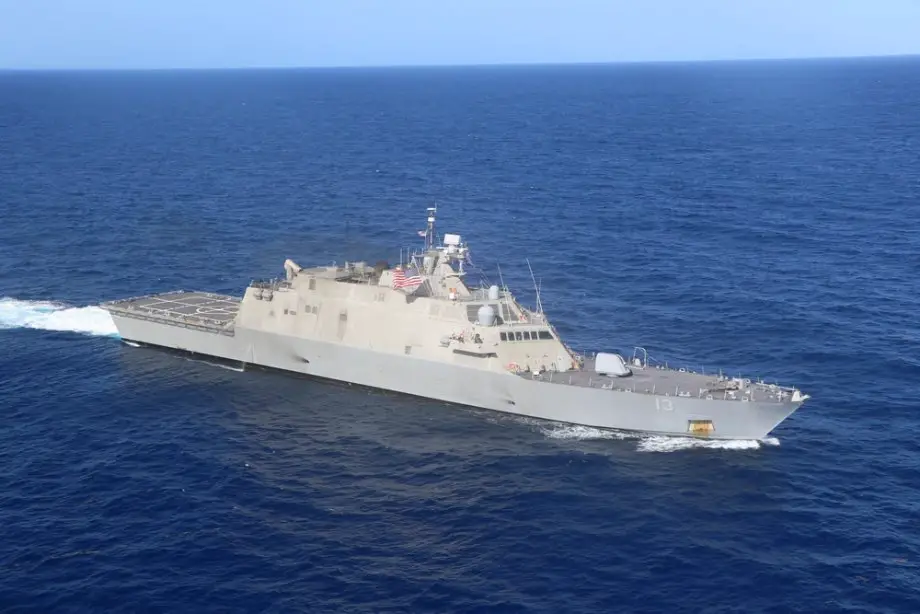According to information published by the US DOS on January 27, 2024, According to information published by the US DOS on January 27, 2024, U.S. Secretary of State Anthony Blinken has addressed a letter to the Prime Minister of the Hellenic Republic, outlining a proposal for the transfer of up to four littoral combat ships to Greece under the Excess Defense Articles (EDA) program.
Follow Navy Recognition on Google News at this link
 Freedom class littoral combat ship USS Wichita. (Picture source: Dvids)
Freedom class littoral combat ship USS Wichita. (Picture source: Dvids)
The U.S. Navy's introduction of the Littoral Combat Ship (LCS) represents a significant shift in naval warfare, focusing on operations in near-shore environments. The LCS, a class of small surface vessels, has been designed to be networked, agile, and stealthy, intended to counter anti-access and asymmetric threats in littoral zones. However, the effectiveness of these ships in their designated roles has been subject to debate.
Comparable to corvettes in other navies, the LCS comes in two variants: the Freedom class and the Independence class. These ships are slightly smaller than the Navy's former Oliver Hazard Perry-class frigates but larger than Cyclone-class patrol ships.
They are equipped with a flight deck and hangar for two SH-60 or MH-60 Seahawk helicopters, a stern ramp for small boats, and the capacity to deliver a small assault force with vehicles to roll-on/roll-off port facilities. Their standard armament includes Mk 110 57 mm guns and RIM-116 Rolling Airframe Missiles, supplemented by autonomous air, surface, and underwater vehicles.
The LCS emphasizes speed, modular mission capabilities, and a shallow draft, over the air defense and surface warfare capabilities of destroyers. The first LCS, USS Freedom (LCS-1), was commissioned in 2008, followed by the trimaran USS Independence (LCS-2) in 2010.
LCS missions largely rely on carried vehicles, like helicopters and unmanned vehicles, to perform tasks such as mine hunting and anti-submarine operations. However, a 2010 Pentagon report raised concerns about the survivability of the LCS in hostile combat environments. In response, the Navy emphasized the ships' speed and automation for damage control, with plans for the crew to abandon ship if necessary.
Despite these concerns, the LCS is not intended for front-line combat but rather for missions like minesweeping, patrolling, and partnership-building exercises under the cover of more capable warships.
The LCS features a unique 3:2:1 manning concept, aiming for greater operational flexibility and reduced crew sizes compared to traditional deployment practices. While the LCS cannot defend against anti-ship cruise missiles effectively, its ability to operate in shallow waters offers tactical advantages in littoral zones.
Issues
Despite its innovative design, the LCS has faced several operational challenges. A 2012 report by Rear Admiral Samuel Perez raised concerns about the ships’ capability to meet the demands of regional combatant commanders, particularly against well-armed adversaries.
The physical design of the Independence-class LCS, with its wide beam, was also noted to potentially pose navigational issues in narrow waterways and harbors.



